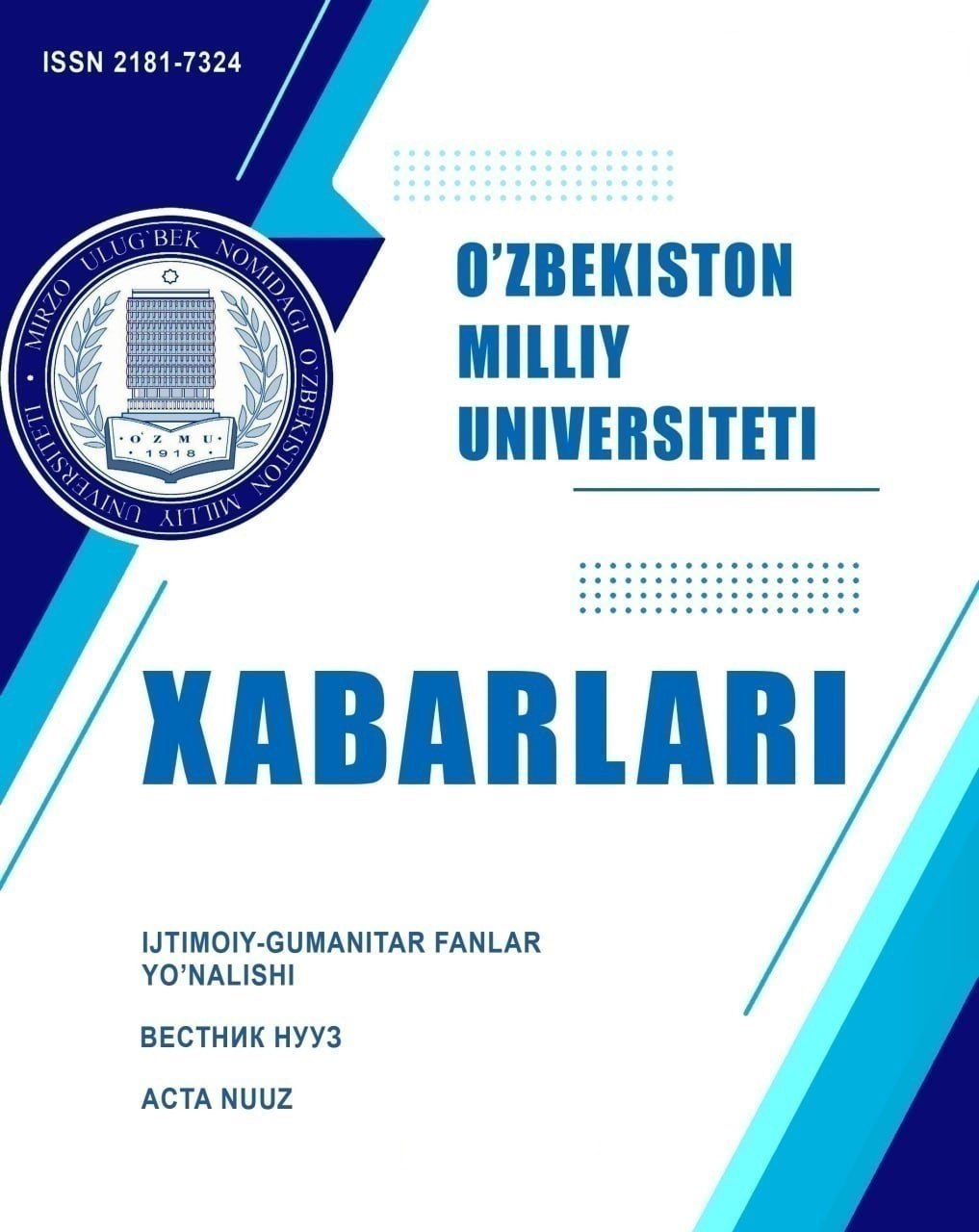XORIJIY TILLARNI O‘RGANISH JARAYONIDA TALABALARDAGI XAVOTIRLIK DARAJALARI
Abstract
This article examines the anxiety levels of university students engaged in foreign language acquisition and the methods used to assess it. To assess anxiety levels, the Spielberger-Hanin approach was used, which includes medium and low criteria indicative of elevated anxiety; specifically, reactive anxiety is characterized by tension and anxiousness.
References
Aida, Y. (1994). Examination of Horwitz, Horwitz, and Cope's construct of foreign language anxiety: The case of students of Japanese. Modern Language Journal, pp. 78, 155–167.
Batumlu, D. Z. and Erden, M. (2007). The relationship between foreign language anxiety and English achievement of Yıldız Technical University of foreign languages preparation students. Theory and Practice in Education, 3 (1), 24-38.
Çubukçu, F. (2008). A study on the correlation between self-efficacy and foreign language learning anxiety. Theory and Practice in Education, 4(1), 148–158.
Dörnyei, Z. (2005). The psychology of the language learner, individual differences in second language acquisition. Lawrence Erlbaum Associates, Inc., Publishers. London.
Genç (2009), Foreign language anxiety of students of the school of foreign languages at İnönü University. E-journal of New World Sciences Academy, 4(3), 1080-1087.
Han, J. (2014). A study on the influence of anxiety and metacognitive strategies on listening proficiency. Journal of chemical and pharmaceutical research, 6(6), 2484–2496.
Horwitz, E. K., Horwitz, M. B., & Cope, J. (1986). Foreign language classroom anxiety. Modern Language Journal, 70, 125-132.
Horwitz, E. K., Horwitz, M. B., & Cope, J. A. (1991). Foreign Language Classroom Anxiety. In E. K. Horwitz & D. J. Young (Eds.), Language anxiety: From theory and research to classroom implications. Englewood Cliffs. (pp. 27-39). New Jersey: Prentice Hall.
Horwitz, E. K., & Young, D. J. (1991). Language anxiety: From theory and research to classroom implications. Englewood Cliffs, NJ: Prentice Hall.
Kitano, K. (2001). Anxiety in the college Japanese language classroom. The Modern Langauge Journal, 85(4), 517–566.
Krashen, S. (1981). Principles and Practice in second language acquisition. English Language Learning Series. London.
MacIntyre, P. D. (1999). Language anxiety: A review of the research for language teachers. In D. J. Young (Eds.), Affect in foreign language and second language learning. (pp. 4–25). Boston: McGraw-Hill.
Öner, G. ve Gedikoğlu, T. (2007). Foreign language anxiety affecting learning English of secondary school students in Gaziantep. Gaziantep University Journal of Social Sciences, 6 (2): 67-78.
Nyikos, M. (1990). Gender-related differences in adult language learning: Socialization and memory factors. Modern Language Journal, 74(3), 273–287.
Oxford, R. (1999). Anxiety and the Language Learner: New Insights. Jane, A. (Eds.), Affect in Language Learning. Cambridge University Press, pp. 58–6.
Scovel, T. (1978). The effect of affect on foreign language learning: A review of the anxiety research. Language Learning, pp. 19, 245– 254.
Scovel, T. (2001). Learning new languages: A guide to second language acquisition. Boston: Heinle and Heinle.
Şakrak, G. (2009). The relationship between emotional intelligence and foreign language anxiety in Turkish EFL students. Yayımlanmamış yüksek lisans tezi, Bilkent Üniversitesi, Ankara. 19. Young, D. J. (1986). The relationship between anxiety and foreign language oral proficiency ratings. Foreign Language Annals, pp. 23, 539–553.
Young, D. J. (1992). Language anxiety from the foreign language specialist's perspective: Interviews with Krashen, Omaggio Hadley, Terrell, and Rardin. Foreign Language Annals, 25(2), 157–172.
Copyright (c) 2024 News of the NUUz

This work is licensed under a Creative Commons Attribution-NonCommercial-ShareAlike 4.0 International License.


.jpg)

1.png)







